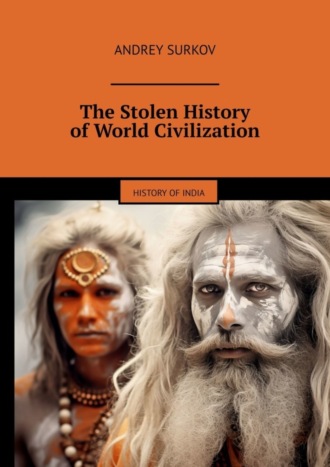
Полная версия
The Stolen History of World Civilization. History of India
The Niti-sutra (or Chanakya-sutra) consists of aphorisms on appropriate conduct. Out of the known 455 sutras, approximately 216 of them pertain to the «Chanakya-raja-nitishastra,» a guide on what not to do when ruling a kingdom.
Chanakya utilized these sutras to educate the young Chandragupta. The foundation of these aphorisms is based on the moral aspect of virtuous governance.
The Niti-shastra, which is a guidebook for ethical conduct, primarily caters to the king and his retinue’s ideal way of living. The Arthashastra emphasizes that power upholds the sleeper, dominates all living beings, shields them, and maintains law and order. In fact, the Chanakya’s doctrine delves into the core of state power and jurisprudence.
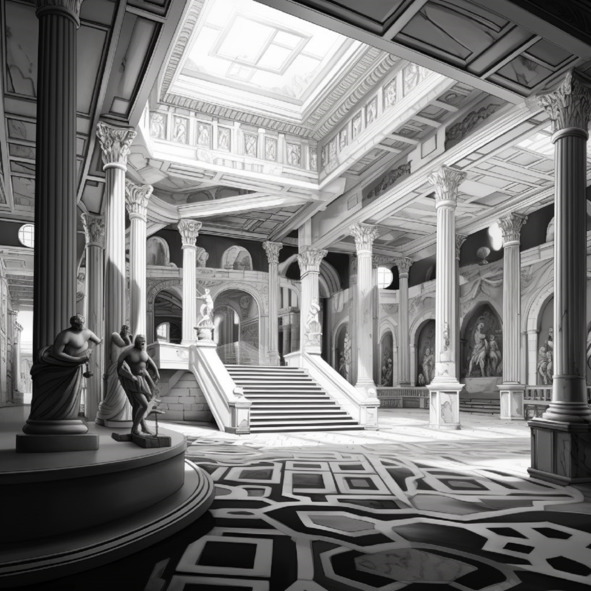
Platon Academy. Artistic reconstruction by the author.
Chapter 3. How Antiquity’s History Was Rewritten
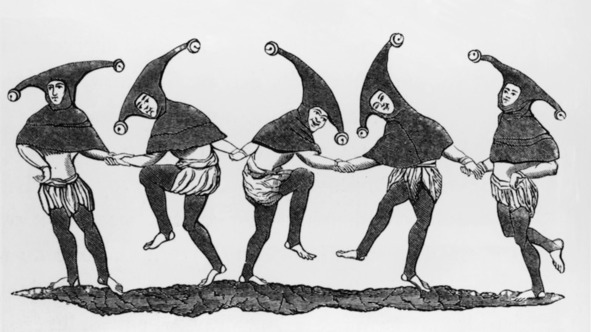
«Fools Dance» – a Miniature Facsimile from a 13th Century Manuscript in the Bodleian Library, Oxford. Freely Available.
The initial exhaustive Latin version of Aristotle’s oeuvre, was commented on by Andalusian Arab philosopher Averroes (1126—1198), was initially published in Venice in 1489; likewise, publisher and merchant Aldus Manucius issued the first Greek edition in Venice between the years 1495 and 1498.
The New Academy, founded by Manucius in Venice at the very end of the 15th century, consisted of 30 scholars who prepared the publication of each work by practically rewriting ancient manuscripts. By the close of the 15th century, Venice had accumulated a significant library of manuscripts obtained from Constantinople and penned by classical authors. On top of this, with the city housing a significant number of Greek immigrants who were recruited as translators, Venice quickly became a booming hub for publishing. After the revised ancient texts’ release, all the originals were nowhere to be found, despite their significant historical and material worth. The deliberate destruction of these manuscripts, which were exceedingly valuable and safeguarded like treasures, was not an accident but a calculated effort to manipulate world history according to a political agenda.
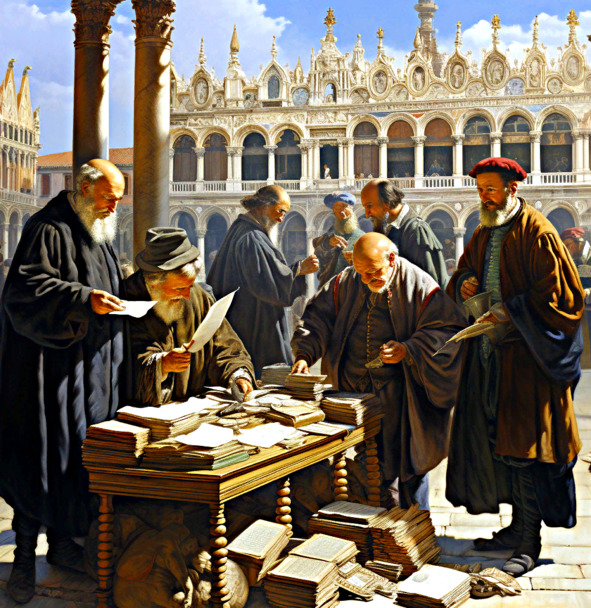
Accounting of ancient manuscripts exported from Constantinople. Venice. Artistic reconstruction by the author.
Whilst revising classical ancient texts, Manucius republished earlier printed works from Florence, Rome, and Milan.
He reviewed and amended the texts to make sure that there were no contradictions with the newly published editions, thereby paving the way for the beginning of the printing era. The printing press’s invention year is widely accepted to be 1445. The Johannes Gutenberg’s invention core idea was to utilize individual metal letters for typesetting, arranged in specific cells. The letters were manually painted and then pressed onto the paper by a machine, resulting in an exact reproduction of the book page. Over the course of half a century, this technology became widespread throughout Europe.
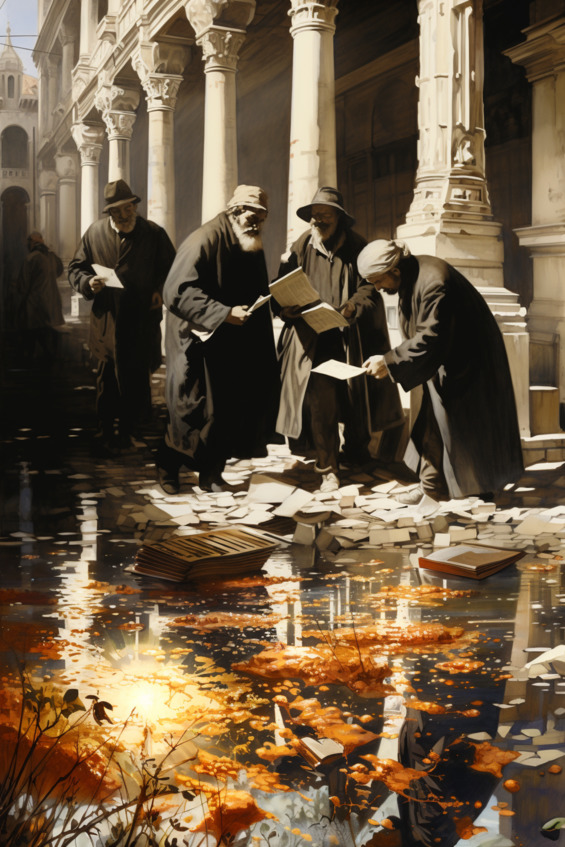
Accounting of ancient manuscripts exported from Constantinople. Venice. Artistic reconstruction by the author.
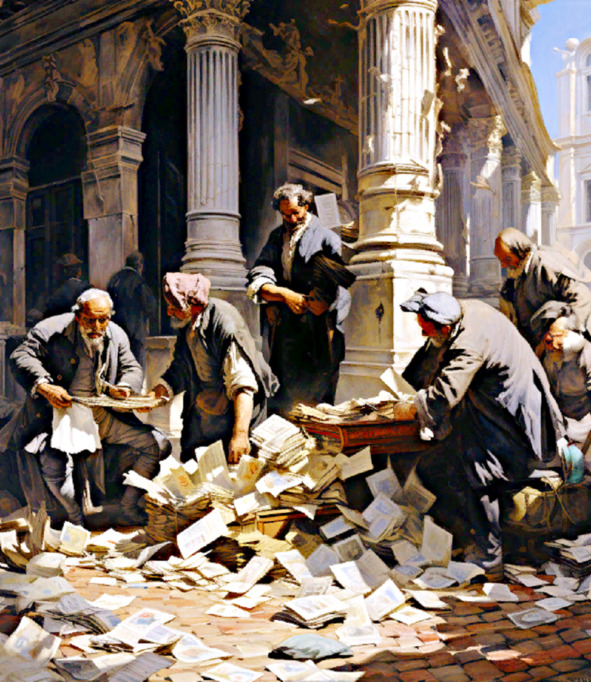
Manucius printing house. Work with ancient manuscripts. Venice. Artistic reconstruction by the author.
In the later half of the 15th century, the rewriting of ancient authors became a common occurrence. All kinds of works were not only copied, but also reproduced. «Nine» comedies by Aristophanes were published in 1498; Thucydides, Sophocles, and Herodotus in 1502; «Greek History» by Xenophon and Euripides in 1503; and Demosthenes in 1504. In 1509, Plutarch’s minor works were released.
During that time, it is conceivable that Hieromonk Macarius, who later established a printing house in Obod, near Cetinje, studied at the Academy of Manucius and continued to carry on transcribing ancient manuscripts practice.
Manucius published Plato in 1513, dedicating it to Pope Leo X de Medici (1513—1521). It is unusual to dedicate an edition of a pagan author to the head of the Christian Church, especially considering that Plato’s work contradicts the foundations of the entire Christian doctrine. However, this apparent contradiction only holds true at first glance. In reality, the Roman popes were distanced from Christianity. They supported the practice of rewriting history and introducing antiquity to Europe, albeit in their own interpretation.
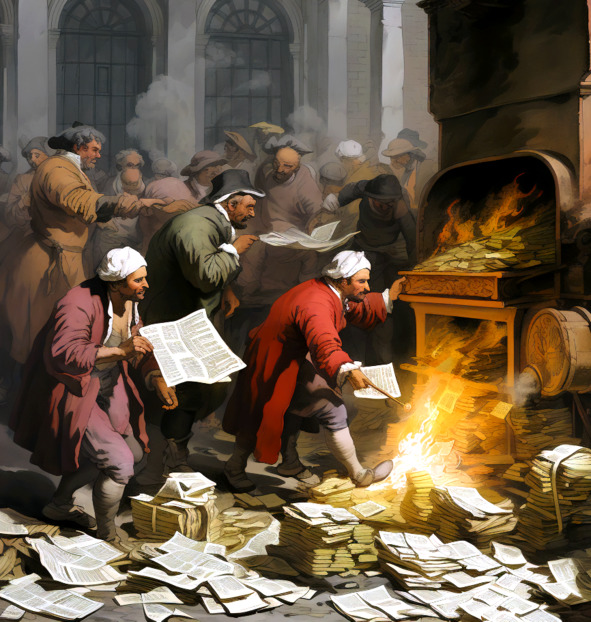
Destruction of ancient manuscripts. Venice. After the ancient manuscripts were rewritten, all the originals were destroyed to hide the forgery. Artistic reconstruction by the author.
Pindar, Isychius, and Athenaeus published works in 1514. Late in his life, Manucius published the previously unpublished «Septuagint»; it was printed posthumously in 1518.
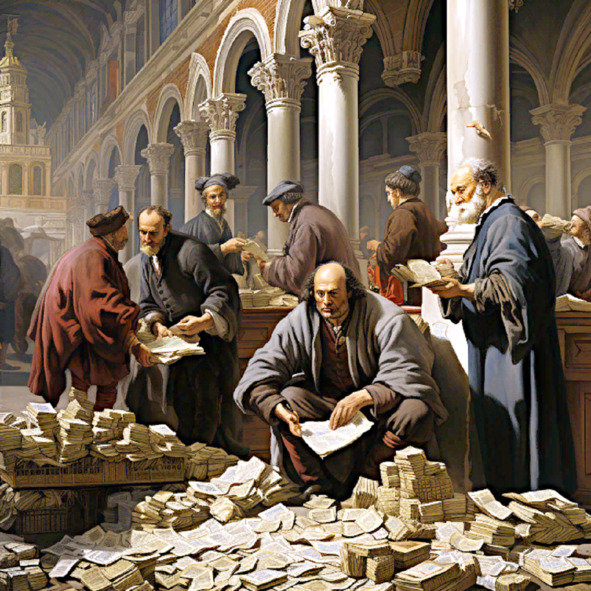
Venice. Aldo Manucius at work. Artistic reconstruction by the author.
Creating antiquity a renewed sense, in 1502 Manucius established a community called «Hellenists,» as a part of his «New Academy». The academy’s regulations were written in Greek, members were required to communicate in Greek, and their names were Hellenized, along with their official titles. The New Academy members comprised, among others, Erasmus of Rotterdam and the Englishman Thomas Linacre.
After Manucius’ passing, his heirs took up his mantle and received significant demand alongside with generous funding from influential figures. They carried on his legacy with equal enthusiasm and printed the first editions of Pausanias, Strabo, Aeschylus, Galen, Hippocrates, and Longinus, thereby playing a significant role in the development of the newly established classic literature.
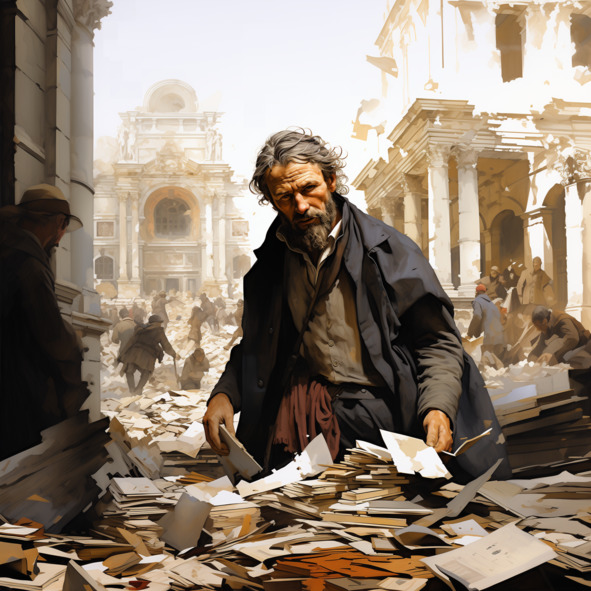
Analysis of ancient manuscripts exported from Constantinople. Venice. Artistic reconstruction by the author.
Among other publications, Manucius’s Printing press produced Bembo’s «Azolan Conversations,» Poliziano’s complete works, Polyphilus’ «Hypnerotomachia,» Dante’s «Divine Comedy,» Petrarch’s poems, early Christian-era Latin poets’ collections, Pliny the Younger’s letters, Giovanni Pontano’s poems, Jacopo Sannazzaro’s «Arcadia,» Quintillion, Valerius Maximus, and Erasmus’ «Sententia.»
Normally, the print run across each edition was approximately 200—500 copies, although there were occasional deviations. For instance, Virgil’s edition was reprinted in 1501 with a larger print run of 1,000 copies, which was intended specifically for the European royal courts’ aristocracy.
Manucius Torresano’s father-in-law owned the second Venetian printing company founded by Nicolas Jenson, who was also a major publisher. Consequently, the two families merged, resulting in two major publishing ventures under one shared name. On Manucius’ editions, both Aldus and Asolanus were mentioned in the title pages in tandem. After his demise in 1515, Torresano and his sons sustained the business until Manucius’ kids came of age. The «Dolphin and Anchor» emblem, accompanied by the motto «Hasten Slowly,» emphasized the rewriting of the world’s history «Great Project» precise execution. It remained within the Alda house until the owners’ third generation when production ceased.
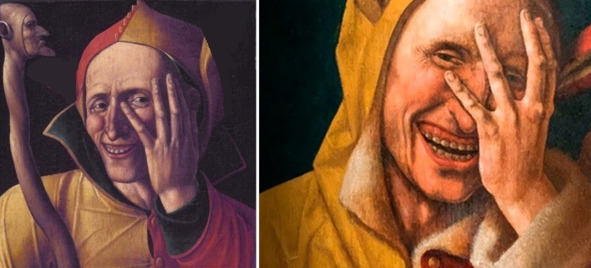
Venice. The Сlown At the Сarnival, the Picture is Freely Available
During the following popes’ reigns, ancient books were actively published:
– Alexander VI Borgia (Boruch), 1492—1503, born 1431, nephew of Pope Calixtus III Borgia (1555—1558);
– Julius II (Giuliano della Rovere), 1503—1513, born 1443, nephew of Pope Sixtus IV (1471—1484, Francesco della Rovere), patron of the Medici;
– Leo X Medici, 1513—1521, born 1475. The last pope who saw Western Europe become fully Catholic;
– Clement VII de Medici, 1523—1534, born 1478, cousin of Pope Leo X de Medici;
– Paul III (Alessandro Farnese), 1534—1549, born 1468, brother of Pope Alexander VI Borgia’s mistress.
Despite their enmity and hatred towards each other, these popes had similar mentalities and lifestyles. While their beliefs remain unclear, based on their actions, it’s most likely that they weren’t adherents of Christianity, but were instead supporters of a certain anti-Christian school of thought. Their main focus was on their own power and profit. They were unreserved in exposing each other’s faults and carrying out thorough investigations of the committed crimes.
It raises the question whether individuals like them, who were appointed by politics to write the world’s history, were honest in doing so.
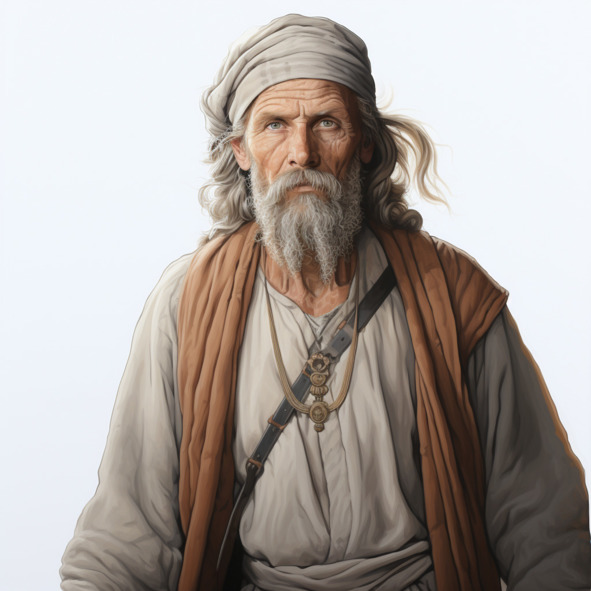
Andalusian Arab philosopher Averroes (1126—1198). Artistic reconstruction by the author.
Chapter 4. Alexander and the Void
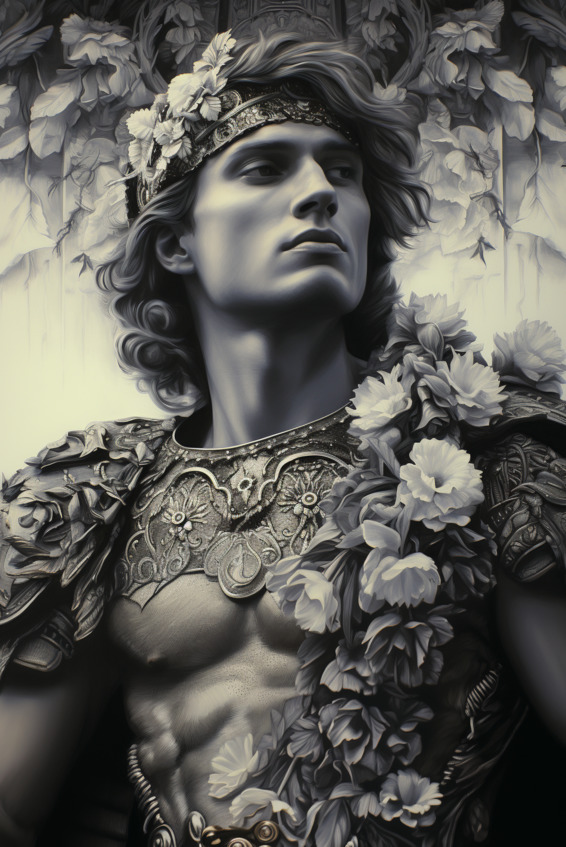
Alexander the Great. Artistic reconstruction by the author..
Most of the works of antiquity are focused on events and geographical regions that currently comprise India, which hints at the notion that this region served as the focal point of the world’s civilization in ancient times.
Among all of ancient authors’ works, the description of Alexander the Great’s campaigns holds the most significance and importance for us. The general assumption is that Alexander the Great led his famous military campaign from the present-day southern Balkans region through the realm of the Persian Empire to India, thus reaching the purported «the earth’s end.»
However, I aim to demonstrate that Alexander’s march was in fact from the East to the West.
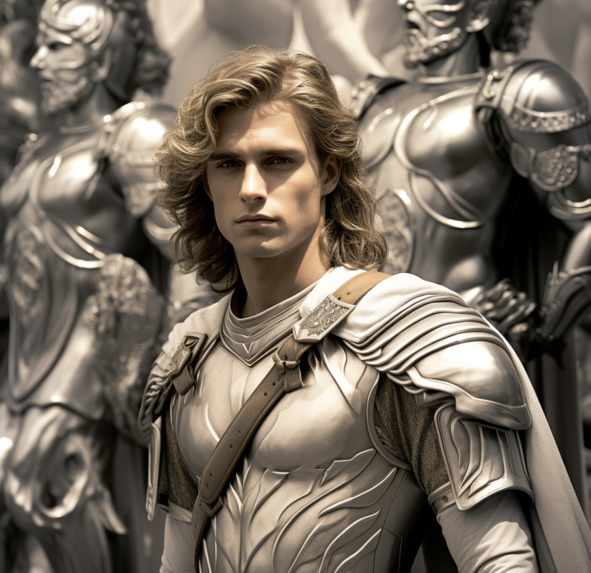
Alexander the Great in Africa. Artistic reconstruction by the author.
Did Alexander reach «the earth’s end» during his campaign? Yes, that is correct. Based on the account of chroniclers, Alexander encountered no resistance from enemy troops or powerful states, but rather a vast wilderness: his army found itself in places where there was nothing but wild beasts, at the very edge of the world, on the «outer ocean shores».
The ancient authors recount sightings of incredibly tall individuals after weeks of traveling. Alexander was pleased, believing he had discovered a worthy opponent. Subsequently, scouts were sent out, and they soon returned with a remarkable findings, several hairy giants captured by them. Unfortunately, they were all gorillas. One may wonder if this description of Alexander discovering «the earth ends,» does, in fact, refer to India.
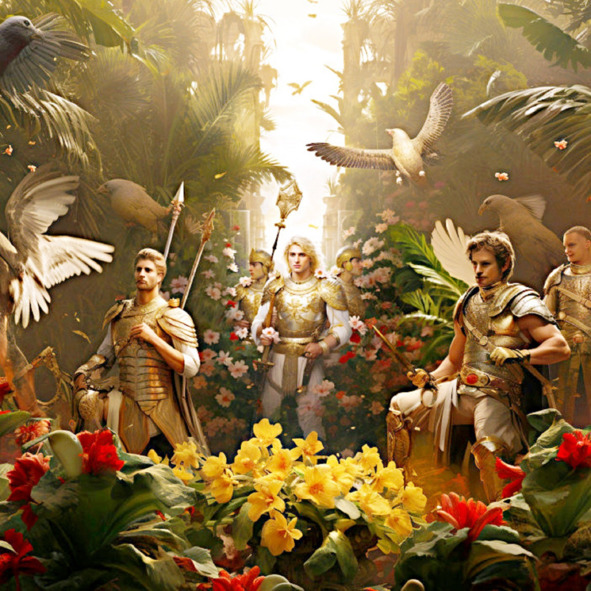
Alexander is in Africa. Artistic reconstruction by the author.
According to the narrative that has, traditionally, been indoctrinated in us by authors from Britain and, generally, Europe, we are expected to believe that the ancient chroniclers describe Alexander’s expedition into what is now India, wherein they explicitly depict a pristine wilderness – which, allegedly, lacks inhabitants, kingdoms, yet possesses an abundance of savage animals, such as gorillas in the jungle – being situated between modern-day Indus and Ganges rivers. Supposedly, the army led by Alexander arrived at the banks of the Ganges. The soldiers reportedly decided to retreat for a lack of a worthy opponent and resources to conquer. However, this claim may have been more plausible to the 19th or early 20th century readers who did not have a complex understanding of historical events.
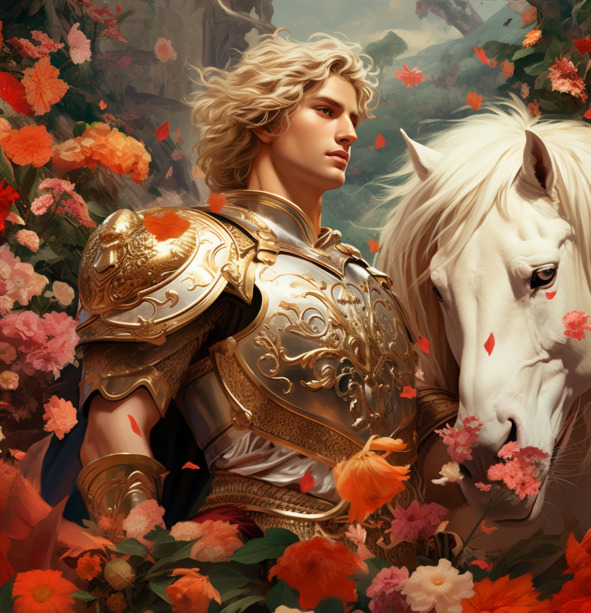
Alexander the Great, artistic reconstruction by the author.
However, in the 21st century, it’s unlikely that any individual interested in history and geography would be unaware that the region extending from the Indus to the Ganges and spanning towards Bengal has always been recognized as one of the most densely populated areas on the planet. As early as ancient times, there were robust states, affluent cities, and sophisticated farming practices. These lands were among the first to be settled by the Aryans, who had arrived here over 1,000 years prior to the accounts documented by ancient writers. In Alexander’s era, they were the quintessential hub of our civilization. The only obstacle standing in his way was the idea of scouring the vast territory of Africa for the scattered primitive tribes eluding his pursuit.

Alexander on the shores of the External Sea (Atlantic Ocean). Artistic reconstruction by the author.
If we restore the geography that was turned upside down in the 19th century to its correct position, the events will fall into logical order. When Alexander’s army conquered the Persian Empire from India’s territories, all satrapies of the empire came under Alexander’s rule, including almost all of East Africa, which by that time was already well known and explored. The few rebellious regions of the empire that he defeated were conquered easily enough in a few swift campaigns. There were still little-known territories in Central and Southern Africa that were under the notional control of the Persian Empire, although nominally recorded and accounted for as the lands of the Persian Emperor. Although the Persian Empire very tentatively controlled these territories, there was really nothing to control due to the remoteness, lack of infrastructure, and economic unlivability of these territories at the time. Nevertheless, Alexander, of course, had to see it for himself and was not satisfied with the stories of former advisers of the Persian Emperor.
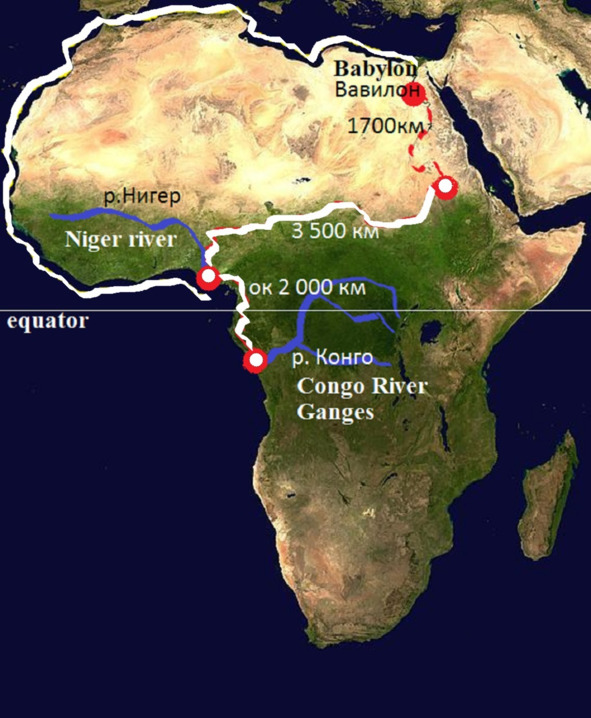
The Route of Alexander the Great’s Fleet Around North Africa. Author’s map from his archive.
The journey from the banks of the Nile to the Niger (these are the modern names of these rivers, in ancient times they were called Euphrates and Indus respectively) along the southern border of the Sahara was not marked by great battles, but rather by an expeditionary military campaign with small skirmishes, relatively easy victories and the swearing in of local kings and chiefs. In some cases Alexander appointed new leaders from among his trusted military personnel, in others he retained those who had already submitted.
In contemporary historical works, this expedition is referred to as Alexander’s Campaign from the Euphrates to the Indus. A flotilla was built on the banks of the Niger (the historical Indus), which descended into the Atlantic Ocean (this ocean was called the «Outer Sea» in the ancient times).
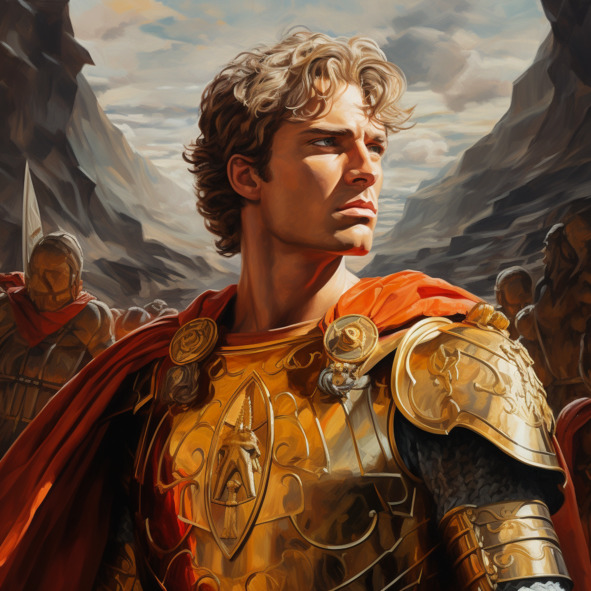
Alexander the Great is at the «edge of the earth» – on the coast of the «Outer Sea» (Atlantic Ocean). Artistic reconstruction by the author.
A detachment of the army was sent westward along the coast to pacify all the monarchs and leaders throughout the territory from the Sahara Desert to the Gulf of Guinea, which was successfully accomplished. Later the fleet made an independent campaign to the north along the coast of West Africa to the Mediterranean Sea. Alexander personally led the main army from the mouth of the Niger to the Congo River.
Конец ознакомительного фрагмента.
Текст предоставлен ООО «Литрес».
Прочитайте эту книгу целиком, купив полную легальную версию на Литрес.
Безопасно оплатить книгу можно банковской картой Visa, MasterCard, Maestro, со счета мобильного телефона, с платежного терминала, в салоне МТС или Связной, через PayPal, WebMoney, Яндекс.Деньги, QIWI Кошелек, бонусными картами или другим удобным Вам способом.



